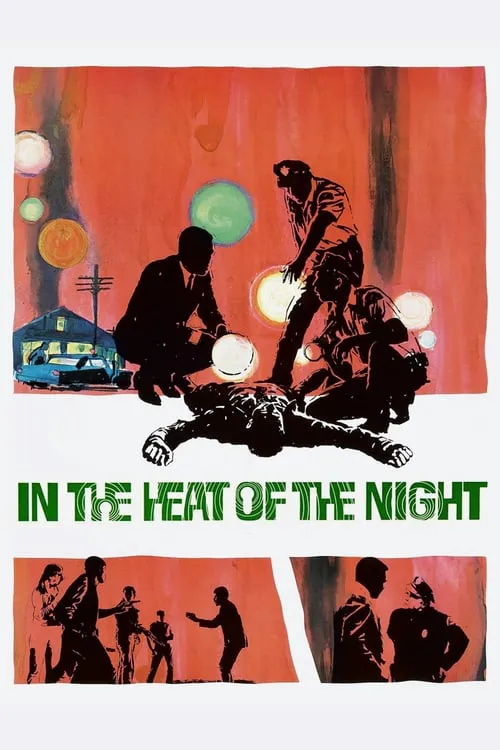In the Heat of the Night

Plot
In the sweltering heat of the Mississippi summer, the quaint town of Sparta is plagued by a sense of unease and distrust. The local residents, mostly white, live in a state of segregation and racial tension. Bill Gillespie, the town's racist police chief, stands as a symbol of the entrenched systems of oppression. When an affluent white businessman is found brutally murdered, Gillespie sees an opportunity to prove his worth and further entrench his control over the community. In a bold display of his prejudices, Gillespie arrests a young African-American man, Virgil Tibbs, who is merely passing through the town. Tibbs, a detective from Philadelphia, is visiting the South to attend his father's funeral. The initial arrest is a gross miscarriage of justice, and Tibbs knows he has to prove his innocence. Using his detective skills and a hint of sarcasm, Tibbs calmly informs Gillespie that he is merely in the town to pay his respects to his father and that he will be returning to Philadelphia soon. Gillespie is unmoved, convinced that Tibbs' dark skin and out-of-town demeanor make him a prime suspect. Despite being wrongly accused, Tibbs remains steadfast and determined to clear his name. When Gillespie discovers Tibbs' true identity as a detective, he realizes the gravity of his mistake and begins to soften, albeit slightly. As Gillespie begins to see Tibbs in a different light, he is forced to confront his own biases and prejudices. Tibbs, with his sharp intellect and Philadelphia upbringing, is an anomaly in Sparta's racist environment. Their unlikely partnership is forged when Tibbs, despite the initial animosity, agrees to help Gillespie solve the crime. Tibbs knows that only by working together can they uncover the truth behind the murder. The investigation is a journey through every social stratum of Sparta, from the rundown shantytowns to the grand mansions. Tibbs makes enemies with the townspeople, who distrust him for his "uppity" nature, but also forms unlikely friendships with the town's outcasts and misfits. Through these relationships, Tibbs gains valuable insights into the complexities of small-town life and the intricate webs of power and prejudice. As the investigation unfolds, Tibbs' skills as a detective are put to the test. He meticulously collects evidence, interviews the townspeople, and carefully pieces together the events surrounding the murder. Gillespie, who begins to admire Tibbs' intellect, learns from his new partner and starts to question his own assumptions. Together, the unlikely duo navigates the treacherous landscape of Sparta's racial tensions, slowly unraveling the mystery. Their collaboration yields unexpected results. Tibbs and Gillespie discover that the murder is linked to a larger conspiracy, involving corruption, police misconduct, and long-buried secrets. Tibbs, with his Philly-bred street smarts, is a valuable asset in the investigation, while Gillespie's local knowledge and connections provide a critical advantage. Through their investigation, both Tibbs and Gillespie undergo a transformation. Gillespie's prejudices begin to fade, replaced by a newfound respect for Tibbs and the African-American community. Tibbs, in turn, gains a deeper understanding of the complexities of small-town life and the resilience of the people who inhabit it. The partnership is not without its tensions, however, as Tibbs and Gillespie clash over issues of racism, justice, and the role of local law enforcement. Ultimately, Tibbs' tenacity, intellect, and Philadelphia sensibilities triumph over the entrenched systems of racism and oppression. Together with Gillespie, Tibbs brings the perpetrators to justice, exposing the dark secrets that have haunted Sparta for years. The film ends with a sense of hope and redemption, as Tibbs and Gillespie have forged a bond that transcends their initial animosity. In the Heat of the Night is a powerful indictment of racism and a testament to the power of unlikely alliances. The film is a gripping mystery, but it is also a nuanced exploration of human relationships, redemption, and the complexities of social justice. The unlikely partnership between Virgil Tibbs and Bill Gillespie serves as a metaphor for the possibility of change and the potential for growth, even in the darkest of environments.
Reviews
Recommendations




